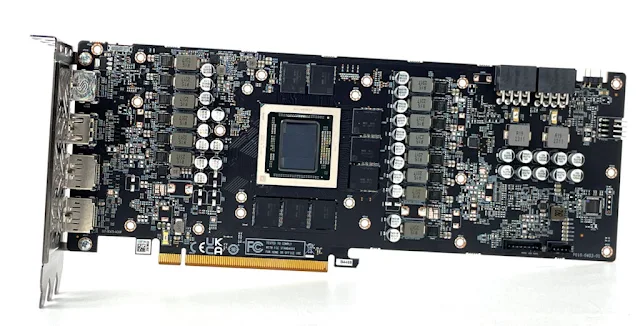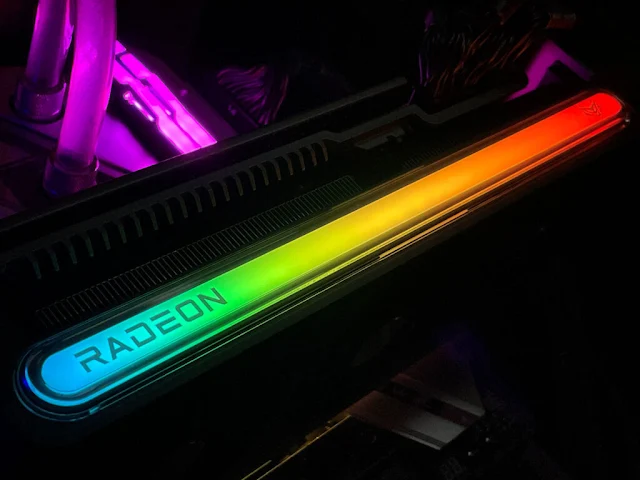The gaming world has witnessed a new contender, the Sapphire NITRO+ Radeon RX 7800 XT, in a battle that promises to shake the gaming graphics card market. AMD recently introduced this powerhouse, built upon the RDNA3 architecture with the Navi 32 XT graphics core and Chiplet technology. In this blog post, we’ll delve into the features, performance, and what makes the RX 7800 XT a formidable rival to the GeForce RTX 4070, without forgetting to admire its stunning design.
A Glimpse into the Radeon RX 7800 XT:
The RX 7800 XT boasts a remarkable specification sheet:
- 60 Compute Units (CU)
- 3,840 Stream Processors (SP)
- 240 Texture Units
- 60 Ray Acceleration Units
- 120 AI Acceleration Units
- 256-bit 16GB GDDR6 memory with 64MB second-gen Infinity Cache
Pricing-wise, it challenges the RTX 4070 with a competitive $499 MSRP.
What Sets the RX 7800 XT Apart?
AMD positions the RX 7800 XT as the ideal choice for 2K gaming enthusiasts. According to AMD’s official data, it delivers over 60 FPS in 2K at all max settings in 19 games, outperforming the RTX 4070 in 15 of them by a whopping 33%. Plus, it offers 33% more memory capacity and supports DisplayPort 2.1 output.
Design Elegance: Sapphire NITRO+ Radeon RX 7800 XT
The Sapphire NITRO+ Radeon RX 7800 XT takes aesthetics to a whole new level. With its curved aluminum casing, three-fan cooling system, and 5x 8mm composite heat pipes, it exudes sophistication. The addition of ARGB lighting strips on the top and bottom of the card transforms it into a work of art.
Size Matters: Compatibility and Support
The card’s 3-slot design measures 320mm x 134.85mm x 61.57mm and weighs 1,599g. It’s essential to check your case’s compatibility and use the included support “jack” to prevent damage to the PCIe slot on your motherboard.
Enhanced Cooling: Keeping Temperatures in Check
A titanium-gray metal backplate enhances the card’s rigidity and heat dissipation. Heat transfer is further improved by a thermal paste application. The card also features a 4-pin fan control interface, with fan speeds tied to GPU temperature for efficient cooling.
Dual BIOS for Customization
The RX 7800 XT offers dual BIOS modes, including Silent and OC options. Silent mode maintains a standard 263W TBP for quieter operation, while OC mode increases TBP to 288W for maximum performance. Users can also customize settings using the TriXX software.
Impressive Display Outputs
Sapphire NITRO+ Radeon RX 7800 XT provides two DisplayPort 2.1 and two HDMI 2.1a ports, offering support for high-resolution gaming, high refresh rates, and advanced HDR capabilities.
Under the Hood: PCB and Architecture
The card is built upon a 14-layer PCB that provides low impedance for efficient signal transfer. It features 14-phase power delivery, with 12 phases dedicated to the GPU and 2 for GDDR6 memory.
The Navi 32 XT Graphics Core
The RX 7800 XT houses the Navi 32 XT graphics core, crafted with 5nm GCD and 6nm MCD chips. It boasts 281 billion transistors and 60 CUs, resulting in improved FP32 computational power compared to its predecessor.
Memory Mastery
The Radeon RX 7800 XT boasts 16GB of 19.5Gbps GDDR6 memory with a 256-bit memory bus. Additionally, AMD has integrated a 64MB Infinity Cache, offering memory performance comparable to GDDR6X.
Thermal Performance: Staying Cool Under Pressure
Under testing conditions, the RX 7800 XT maintained a maximum GPU temperature of 51°C in OC mode. The card’s impressive cooling solution proved efficient even under heavy loads.
Benchmark Battles: RX 7800 XT vs. RTX 4070
In benchmark tests, the RX 7800 XT showcased its prowess, outperforming the RTX 4070 by 12-28% in 3DMark Fire Strike and Time Spy tests. Its advantage becomes even more evident at higher resolutions.
Ray Tracing Challenge
While excelling in traditional gaming benchmarks, the RX 7800 XT faces a tougher challenge in ray tracing scenarios. In 3DMark Port Royal and Speed Way, it lags behind the RTX 4070, especially in complex ray tracing environments.
The RX 7800 XT’s Gaming Dominance
The Sapphire NITRO+ Radeon RX 7800 XT is an AMD gaming marvel that has come to rival the GeForce RTX 4070. With its impressive specifications, elegant design, and competitive pricing, it offers a compelling choice for gamers seeking high-performance 2K gaming. While it may not dethrone Nvidia in the ray tracing arena, its prowess in traditional gaming benchmarks makes it a formidable contender.
For gaming enthusiasts seeking a taste of AMD’s RDNA3 architecture, the RX 7800 XT is a beast to be reckoned with, poised to redefine the gaming experience.









Comments
Post a Comment